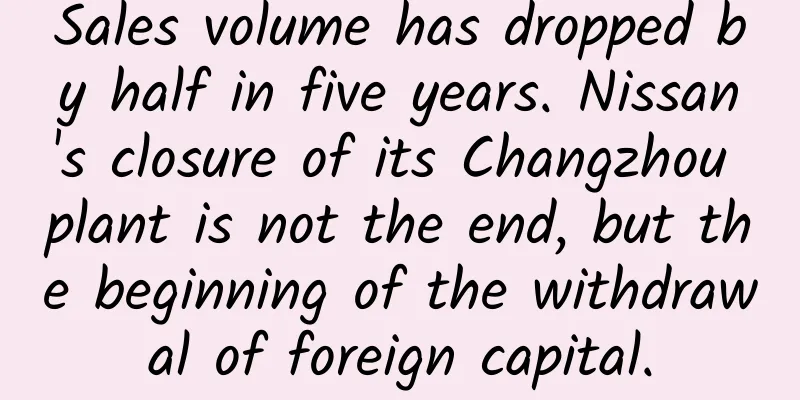Hot topic! Is the crunchy Gongcai in hot pot actually dried lettuce?

|
Recently, the topic #Gongcai is dried lettuce# has made Gongcai a hot topic. Some netizens found that the taste of Gongcai is not much different from dried lettuce, so they thought Gongcai is dried lettuce. However, friends in the origin of Gongcai firmly denied this statement, believing that Gongcai is indeed a member of the genus Lettuce, but it is not the same species as lettuce. Image source: Weibo screenshot So, what is the relationship between Gongcai and lettuce? It is said that Gongcai has a history of 2,000 years and its cultivation history can be traced back to the Qin and Han Dynasties. Is this true? The lettuce family came from afar The simple answer is that Gongcai is a special type of stem lettuce. We must first clarify one thing. There are about 75 species of plants in the genus Lactuca in the Asteraceae family in the world. So far, only one species has been domesticated and widely cultivated, that is Lactuca sativa. The head lettuce, leaf lettuce, romaine lettuce, celery lettuce and Gongcai we buy in the market are just different varieties of lettuce, just like golden retrievers, huskies and chihuahuas are all different varieties of dogs. There are two things that can intuitively show that these vegetables belong to the same family. Whether it is lettuce or romaine lettuce, as long as it is fresh enough, if you break open the petiole or cut the skin, milk will come out. In fact, the prefix "Lac" in the Latin genus name of lettuce "Lactuca" implies the meaning of milk. However, these milks do not contain protein, but contain some ingredients similar to natural rubber, and their purpose is to interfere with the digestive system of animals. During the Qin Dynasty, our ancestors had never eaten this kind of vegetable. At that time, all lettuces were still basking in the sun in vegetable gardens along the Mediterranean coast. The common ancestor of the lettuce family is a mountain lettuce that grows in the cold Mediterranean. Mountain lettuce is a plant covered with prickles and has a strong bitter taste. Fortunately, this weed is not obviously toxic to humans, so it has long been eaten as a vegetable. The image of lettuce leaves was depicted in Egyptian tomb murals in 4500 BC. In ancient Egypt, lettuce was believed to be related to Min, the god of production and harvest, so during festivals, lettuce was placed around the statue of Hades, which was said to enhance the god's reproductive ability and bring better harvests to mankind. It should be noted that the lettuce of this period did not have plump stems or fleshy leaves. It was more like the leaf lettuce and romaine lettuce we see today. In the 16th century, Europeans cultivated lettuce with leaves rolled into balls, which was the ancestor of ball lettuce. This branch of lettuce arrived in China around the 5th century AD. In the Song Dynasty classic "Qingyi Lu", there is a record that "the envoys of the Kingdom of Wu came to the Han Dynasty, and the people of Sui asked for vegetable seeds, and paid them very well, so it was named Qianjincai." It can be seen that lettuce existed in the Sui and Tang Dynasties, and it was quite precious when it first entered the Central Plains. After that, the promotion of lettuce in China went smoothly, and by the 12th century AD, it was "available everywhere" (Bencao Yanyi, Northern Song Dynasty, 1116). In later cultivation, this lettuce took a completely different path. The strength of Chinese lettuce lies not in its tender leaves, but in its thick stems. The thick stems are full of water, and the crisp taste and restrained appearance are very consistent with Chinese aesthetics. An important agricultural book in the Yuan Dynasty, "Nongsang Jiyao", wrote, "It is planted in January and February, and harvested in ninety days. Its stems are as tender as fingers and can be more than a foot tall. It can be eaten as a vegetable after peeling, and can also be stored in wine. It is called lettuce." This is the earliest record of lettuce, and its shape is similar to the stem lettuce used to produce tribute vegetables. As for the term "gongcai", it appeared during the reign of Emperor Qianlong and was presented to Emperor Qianlong as a tribute. The method used at that time was not different from that used today. After the gongcai matured, the skin was peeled off, cut into strips of appropriate width, and dried in the sun. After all, Gongcai is a kind of stem lettuce, and all stem lettuces are called lettuces in horticultural monographs such as "Chinese Vegetable Cultivation". This is the true relationship between the two. Copyright images in the gallery. Reprinting and using them may lead to copyright disputes. Species and varieties Discussions on the classification of crop species have occurred repeatedly, and the key issue remains the confusion between the concepts of species and varieties. In nature, a collection of plant individuals that can effectively exchange genes and produce fertile offspring is a species. To become a new species, it is necessary to isolate genetic exchange. The methods of blocking gene exchange can be divided into two categories, one is called pre-zygotic isolation and the other is called post-zygotic isolation. The so-called post-zygotic isolation means that after the sperm and egg combine, they cannot produce normal individuals that can reproduce the next generation. These zygotes either die or cannot reproduce normally. The most typical example is the offspring of a donkey and a horse - the mule, which can no longer produce offspring. As for pre-zygotic isolation, for plants, there are two most common types of isolation: the pollen of one plant cannot germinate on the pistil of another plant, and the second is that the pollen will not be delivered to the stigma of another plant at all. The most typical example of the first type of isolation is that apple pollen cannot germinate on the stigma of pears. The typical representative of the second type of isolation is orchids. Different orchids rely on highly specialized pollination systems to achieve the effect of isolation. Almost every orchid has its own special means of spreading pollen, including the smell, color, size, flowering time and even the location where pollen sticks to the same pollinating insect. For example, Cymbidium orchids, which have relatively small flowers, mainly rely on bees for pollination; while Tibetan tiger orchids, whose flowers are obviously much larger, have bumblebees to help them; eyebrow orchids, which have special smells and colors, rely on wasps to spread pollen. There is no doubt that there is no genetic isolation between different lettuce varieties; they can all hybridize and produce offspring, and they are still the same species. As for varieties, they are infraspecific group units that have certain or some special and stable identical traits selected by humans. Different varieties have their own relatively fixed characteristics. For example, there are various varieties of apples on the market - Fuji, Huaniu, Marshal, Guoguang, Qinguan, and they all belong to the species of apple. Of course, vegetables are divided into different varieties according to the different edible parts. Lettuce is divided into leaf lettuce and stem lettuce. The former includes head lettuce, leaf lettuce, and romaine lettuce, while the latter is a collection of various lettuces. Copyright images in the gallery. Reprinting and using them may lead to copyright disputes. The brothers among vegetables Similar to the lettuce family, there are many common vegetable species that have produced a large number of varieties during cultivation. Mustard has the highest diversity. From roots to seeds, it has been developed and utilized, and there are special varieties. The mustard we eat is made from the seeds of mustard. The mustard we eat comes from the stem mustard - stem tuber mustard. The baby mustard we eat is the young sprout of the sprout mustard. The mustard knots we eat come from the root mustard. As for the leaf mustard, there are even more flowers in bloom. The snow mustard eaten by friends in Jiangsu and Zhejiang, the big mustard eaten by friends in Guangdong, the green vegetables eaten by friends in Guangxi and Sichuan, and the bitter mustard eaten by friends in Yunnan are all leaf mustard. Cabbage, as a vegetable with a long history, has also evolved into various varieties. The typical leaf varieties include cabbage with heart and kale without heart. The stem variety is Brussels sprouts, commonly known as kohlrabi, which tastes very much like radish, but does not have the spicy smell of radish. Broccoli and cauliflower are also cultivated varieties of cabbage. The most special are Brussels sprouts. Although they look like a smaller version of cabbage, the edible part is not the leaf head, but the buds growing on the stem. Because of their excessive bitterness, they rarely appear on the Chinese table. Author: Shi Jun, PhD in Botany Review丨Gu Yourong Associate Professor, School of Life Sciences, Capital Normal University |
>>: AI has helped reduce in-flight food waste by 63%. How did it do that?
Recommend
Will the more online promotion channels there are, the better the campaign results will be?
Let me answer the question in the title first: Wr...
Insights into 5 new trends in brand marketing from NetEase Yanxuan’s screen-sweeping ads
In 2020, with the complex changes in the social, ...
Who created the largest cycle on Earth? It's right next to you!
In recent years, "carbon neutrality" an...
How much does it cost to develop a Zhengzhou electrician mini program? What is the price of producing Zhengzhou Electrician Mini Program?
The production of Zhengzhou electrician applet is...
The prototype of the "Nautilus" in "Twenty Thousand Leagues Under the Sea": a "living fossil" in the sea with a very long lifespan
In the science fiction novel "Twenty Thousan...
Hot, hot, hot! The impact of high temperatures is far greater than you think
Recently, the Central Meteorological Observatory ...
This article will show you the magical ocean temperature difference power generation
The ocean is the world's largest solar collec...
Ten Thousand Leagues Under the Sea
For reprinting, business cooperation, please scan...
Dark color vs. light color, which umbrella is more sun-proof?
The most frustrating thing about summer is that e...
The passive method of attracting fans through Baijiahao!
Previously, the author shared the traffic-generat...
Why is Apple's self-designed A-series chips so successful?
Anyone who has been following Apple's product ...
Prevent cancer, prevent diabetes, protect the heart and brain... Vitamin D has many benefits! But taking too much can cause poisoning! Don't exceed this amount every day →
Prevent cancer, prevent diabetes, protect the hea...
The Economist: Why did Terry Gou buy Sharp at a high price?
The Economist magazine website recently published...
Taobao Double 11 live broadcast case analysis
Recently everyone has been discussing that "...
How do scientists know the secrets of distant stars? It turns out that they all have spectral "fingerprints"!
On March 30 this year, the world-renowned scienti...









